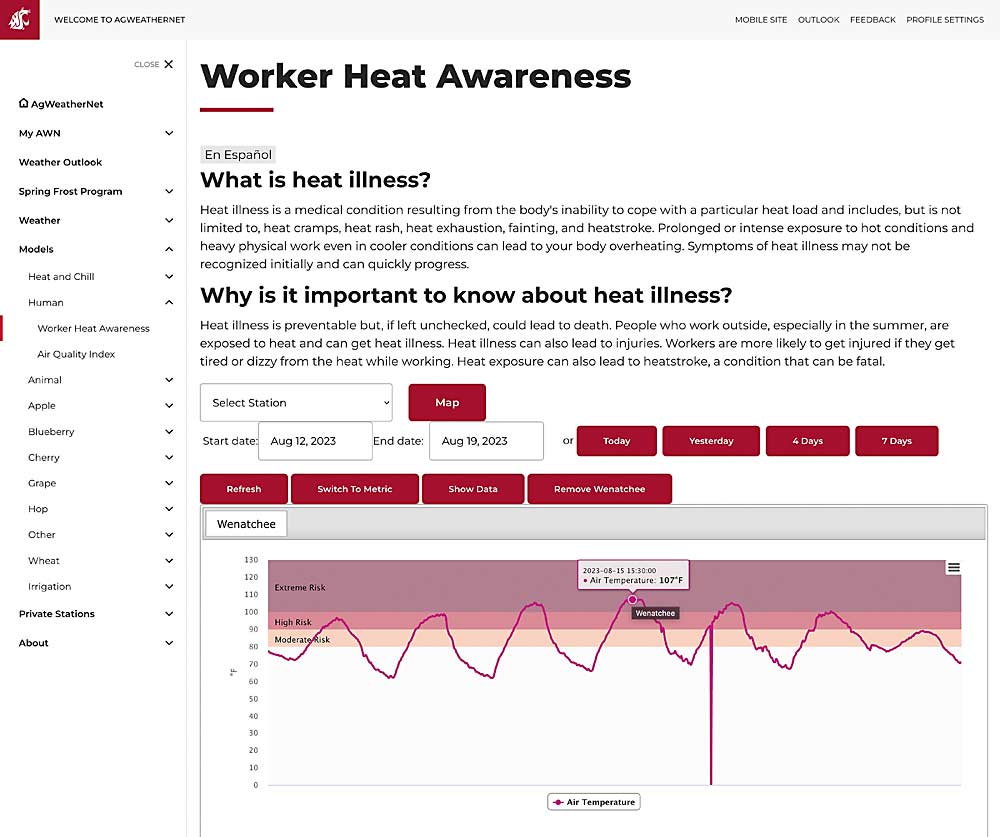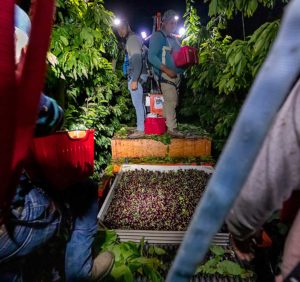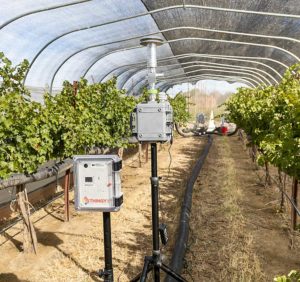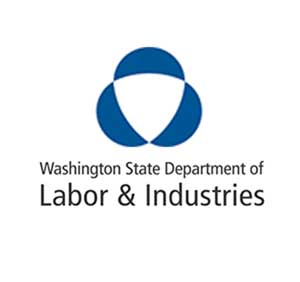—by Kate Prengaman

Crops aren’t the only things at risk from heat stress and wildfire smoke in the air. So are the people who work to harvest them.
New models on Washington State University’s AgWeatherNet website offer growers a one-stop shop for the weather data they need to make decisions to protect their crops and their employees under Washington’s heat and smoke rules. The rules took effect in 2023.
Deploying the existing network of weather sensors — including the grower-owned stations — and the existing alert system used for frost events can help growers comply with the heat safety rules, said Lav Khot, director of AgWeatherNet. Meanwhile, a new set of sensors installed at key stations tracks smoke pollution.
“If you are looking for information on air quality, we now have that option,” Khot said.
His team has been installing sensors on dozens of its stations in rural areas to track the tiny air pollution particles that pose the health risk in wildfire smoke. They are supported in part by the Washington State Department of Labor and Industries and are working with the University of Washington’s Pacific Northwest Agricultural Safety and Health Center, or PNASH, to develop models that will interpret smoke and heat data.
The pre-existing air quality sensor network focused on higher-population areas, and a 2020 survey found just 35 total sensors across Eastern Washington, said Eddie Kasner, outreach director for PNASH.
“The state has added monitoring sites, but the number of established AWN sites surpasses that and are placed closer to agricultural worksites,” he said in an email interview.
Wildfire-caused air pollution can be quite variable across the landscape, so local sensors can help growers make better decisions for crops impacted by wildfire smoke, such as wine grapes, and for worker safety, Khot said.
While smoke and heat are treated as two separate worker safety issues under Washington regulations and AgWeatherNet models, PNASH research shows that the risks compound during July, August and September.
“The risks of adverse health effects from both heat and wildfire smoke in agriculture are influenced by factors that include: more work outdoors during the summer in areas prone to wildfire smoke; increased cardiorespiratory and metabolic demands of work; limited options for work tasks during smoke and heat events; and additional exposures outside of work,” Kasner said.
In addition to providing employers air quality data, the sensors’ data will also support PNASH’s ongoing research into smoke forecasting, which aims to demonstrate if lower-cost, local sensors installed in partnership with AgWeatherNet can provide better air quality forecasts than traditional regulatory monitors.
“We will continue partnering with growers to understand their needs, show proof-of-concept for wildfire smoke data in farm management decisions, and establish a regional smoke-sensing network designed for agricultural communities,” Kasner said.
To find the worker safety models on the AgWeatherNet platform, select the “Human” tab found under the “Models” menu, alongside apple, cherry, blueberry and hop options. Both the heat and smoke pages include links to additional resources from PNASH. Alerts can be set up under the “My AWN” tab.
For additional resources, head to PNASH’s website for its Heat Illness Toolkit at: bit.ly/heat-illness-toolkit and wildfire smoke safety webpage at: bit.ly/wildfire-smoke-safety. Both sites offer resources in English and Spanish. •









Leave A Comment